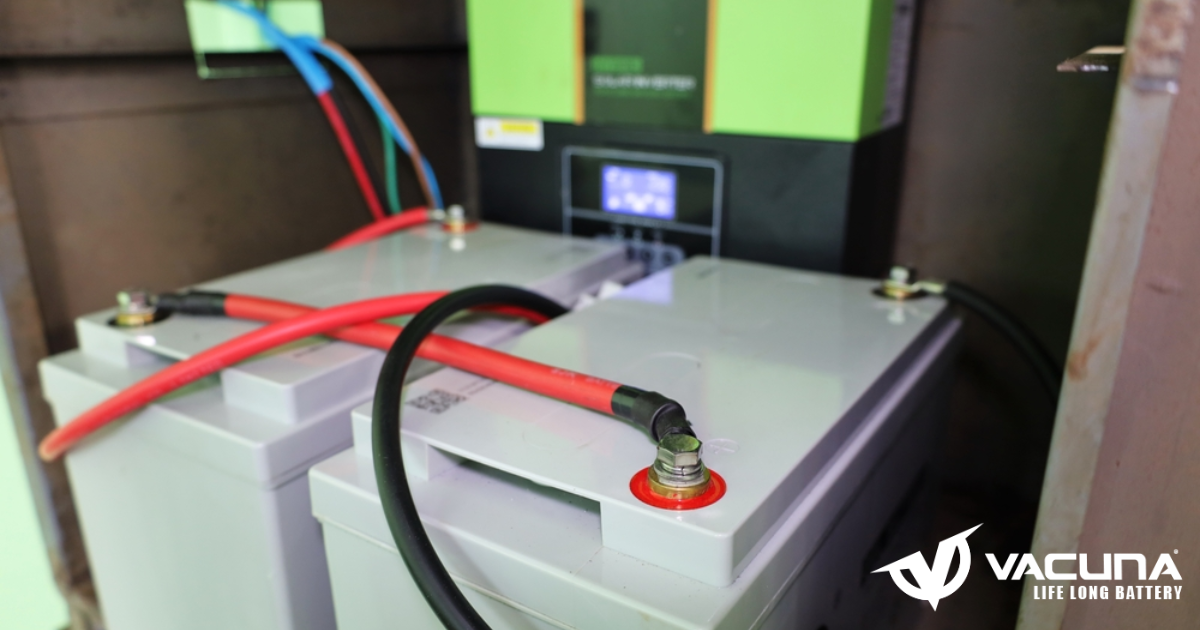Inverter batteries play a crucial role in providing uninterrupted power during electrical outages, making them a staple for households and businesses alike. Among the various types of inverter batteries, lead-acid batteries have long been a reliable choice due to their cost-effectiveness and robust performance. However, to maximize the life and efficiency of your lead-acid inverter battery, proper maintenance is essential. In this article, we’ll provide you with a comprehensive guide on maintaining your lead-acid inverter batteries to ensure they serve you faithfully for years to come.
Understanding the Basics
Before we delve into the maintenance tips, let’s briefly understand how lead-acid inverter batteries work. These batteries are of the “secondary” type, which means they can be recharged and used repeatedly. They consist of lead dioxide (positive plate), spongy lead (negative plate), and a dilute sulfuric acid solution (electrolyte) that facilitates the chemical reactions during charging and discharging.
The basic principle is simple: when the battery is charged, lead dioxide and spongy lead plates undergo reversible chemical reactions, storing electrical energy. During discharge, these chemical reactions reverse, releasing stored energy. Now, let’s explore how to maintain this system efficiently.
Maintenance Tips for Lead-Acid Inverter Batteries
1. Regular Visual Inspection
One of the simplest yet most crucial maintenance steps is to perform regular visual inspections. Check for any signs of physical damage, leakage, or corrosion on the battery terminals and connections. If you spot any issues, address them promptly to prevent further damage.
2. Keep It Clean
Dirt and grime can accumulate on the battery’s exterior, leading to a gradual loss of charge. Regularly clean the battery using a mixture of baking soda and water to remove dirt and prevent corrosion. Make sure to disconnect the battery terminals before cleaning.
3. Check the Electrolyte Levels
For non-sealed lead-acid batteries, it’s essential to check the electrolyte levels regularly. Add distilled water as needed to maintain the electrolyte at the recommended levels. Do this with caution, as overfilling or underfilling can lead to problems. Refer to the manufacturer’s instructions for specific guidance.
4. Tighten Loose Connections
Loose connections can lead to a poor electrical connection, reducing the efficiency of the battery. Ensure all terminals and connections are tight and free from corrosion. Apply petroleum jelly to the terminals to prevent future corrosion.
5. Equalize Charging
Equalizing charging is an essential maintenance procedure for flooded lead-acid batteries. It helps balance the voltage and specific gravity of the cells, reducing sulfation and stratification. Consult your battery manufacturer’s recommendations for the proper equalization process.
6. Prevent Overcharging
Overcharging is detrimental to lead-acid batteries and can lead to excessive water consumption. Make sure your inverter has a well-regulated charging system that prevents overcharging. Consider investing in a quality charge controller to safeguard your battery.
7. Avoid Deep Discharges
Lead-acid batteries don’t perform well under deep discharge conditions. Avoid letting the battery discharge below 50% of its capacity whenever possible. Deep discharges can lead to irreversible sulfation and reduced battery life.
8. Regularly Test the Battery
Perform routine battery tests to monitor its health. You can use a hydrometer to check the specific gravity of the electrolyte or a digital battery tester for a more comprehensive analysis. Testing helps you detect early signs of battery degradation.
9. Temperature Control
Extreme temperatures, both hot and cold, can affect the performance and lifespan of lead-acid batteries. Whenever possible, store the battery in a temperature-controlled environment, and avoid exposing it to direct sunlight.
10. Regularly Recharge
Even if you’re not facing power outages, it’s advisable to recharge the battery periodically, at least once every three months. This prevents self-discharge and ensures the battery is ready for use when needed.
11. Disposal and Recycling
When the battery reaches the end of its life, ensure it’s disposed of properly. Lead-acid batteries are recyclable, and recycling helps reduce environmental impact. Check with your local authorities for recycling options or return the battery to the manufacturer or a designated recycling center.
Signs of Battery Replacement
Despite proper maintenance, lead-acid inverter batteries have a limited lifespan. It’s essential to recognize the signs indicating that it’s time for a replacement.
These signs may include
Reduced Backup Time: If you notice a significant decrease in the backup time provided by the battery, it may indicate declining performance.
Frequent Overheating: Overheating during charging or discharging can be a sign of internal problems within the battery.
Reduced Specific Gravity: Consistently low specific gravity readings in a flooded battery suggest reduced capacity.
Excessive Water Consumption: If the battery requires frequent water top-ups, it might be reaching the end of its life.
Bulging or Swelling: Physical deformities, such as bulging or swelling of the battery case, can indicate internal damage.
Inability to Hold a Charge: If the battery struggles to maintain a charge, even after proper maintenance and equalization, it may need replacement.
Conclusion
lead-acid inverter batteries are a cost-effective and reliable power backup solution when maintained correctly. By following these maintenance tips and being attentive to signs of degradation, you can extend the life of your battery, ensuring a constant and reliable power source during outages. Remember that proper maintenance not only saves you money but also minimizes environmental impact through responsible disposal and recycling practices.
Vacuna is the go-to choice for the best inverter battery in the UAE! As a trusted battery manufacturer and exporter, Vacuna excels in providing top-notch batteries that meet the highest industry standards. Whether you’re looking for reliable power backup solutions for your home or efficient energy storage options for industrial use, Vacuna’s range of inverter batteries has got you covered. With their commitment to quality and expertise in battery technology, Vacuna ensures that their batteries deliver exceptional performance and durability. Trust Vacuna for all your battery needs, and experience the difference between their superior products.
Follow Us:
Facebook
Instagram
Twitter









